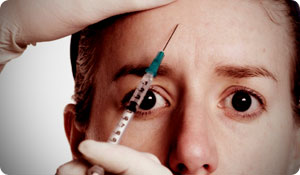
More than 30 million Americans experience migraine headaches, according to The Migraine Research Foundation. Migraine ranks in the top 20 of the world's most disabling medical illnesse--with many sufferers living in fear knowing that at any time an attack could disrupt their ability to work or go to school, care for their families, or enjoy social activities. In fact, research shows that less than 10 percent of sufferers are able to work or function normally during their migraine attacks.
In a study published in Plastic and Reconstructive Surgery and led by Dr. Bahman Guyuron, M.D., a professor and the chair of the department of plastic surgery at the University Hospitals of Cleveland, researchers found that facial surgery may cure and/or reduce the symptoms of migraines.
The study included 75 people who suffered from migraines and was based on a theory that migraines are caused by particular trigger points in the facial nerves.
The participants were first given Botox injections in these specific trigger points to temporarily paralyze the muscle. For those patients who the injections helped relieve the migraines, they were randomly divided into two surgical groups.
After the Botox wore off, one group had a facelift surgery that included the removal of muscle tissue or nerves in the area that typically triggered their migraines; and the second group had a sham procedure, in which incisions were made but all muscles and nerves remained intact.
A year after the procedure, 57 percent of those who had the actual surgery reported the complete elimination of migraine headaches, compared with just 4 percent in the sham surgery group. Additionally, 84 percent of those who had the actual surgery reported at least a 50 percent reduction in migraine pain compared with just 58 percent in the sham group.
Currently, more than 400 people have successfully undergone this treatment, though medical advisors are saying it should be reserved for migraine patients who have exhausted all other options.
If you are suffering from migraine headaches, try some of these self-care options recommended by the Mayo Clinic:
Do a relaxing activity. Spend at least 30 minutes each day doing something you find relaxing such as listening to music, gardening, taking a hot bath or reading.
Try meditation and yoga. You can learn these in classes or at home using books or tapes.
Rest and relax. If possible, rest in a dark, quiet room when you feel a migraine coming on. Place an ice pack wrapped in a cloth on the back of your neck and apply gentle pressure to painful areas on your scalp.
Get enough sleep but don't oversleep. According to the Mayo Clinic, the average adult needs six to eight hours of sleep a night. It's also best to go to bed and wake up at regular times.
Keep a headache diary. Keeping a headache diary will help you learn more about what triggers your migraines and what treatment is most effective.
Sources:
Got Migraines? A New Study Proves Forehead Lifts Can Erase Years and Headaches. American Society of Plastic Surgeons, Press Release. July 31, 2009. http://www.plasticsurgery.org/Media/Press_Releases/Got_Migraines.html. Accessed Dec. 3, 2009.
Mayer, H. Facial surgery may offer migraine cure. CNNHealth.com. August 4, 2009. http://www.cnn.com/2009/HEALTH/08/04/migraine.surgery/index.html. Accessed Dec. 3, 2009.
The Migraine Research Foundation. http://www.migraineresearchfoundation.org/about-migraine.html. Accessed Dec. 3, 2009.
Plastic Surgery Provides Migraine Relief. The Plastic Surgery Channel. http://www.theplasticsurgerychannel.com/breaking-news/plastic-surgery-provides-migraine-relief.html. Accessed Dec. 3, 2009.





